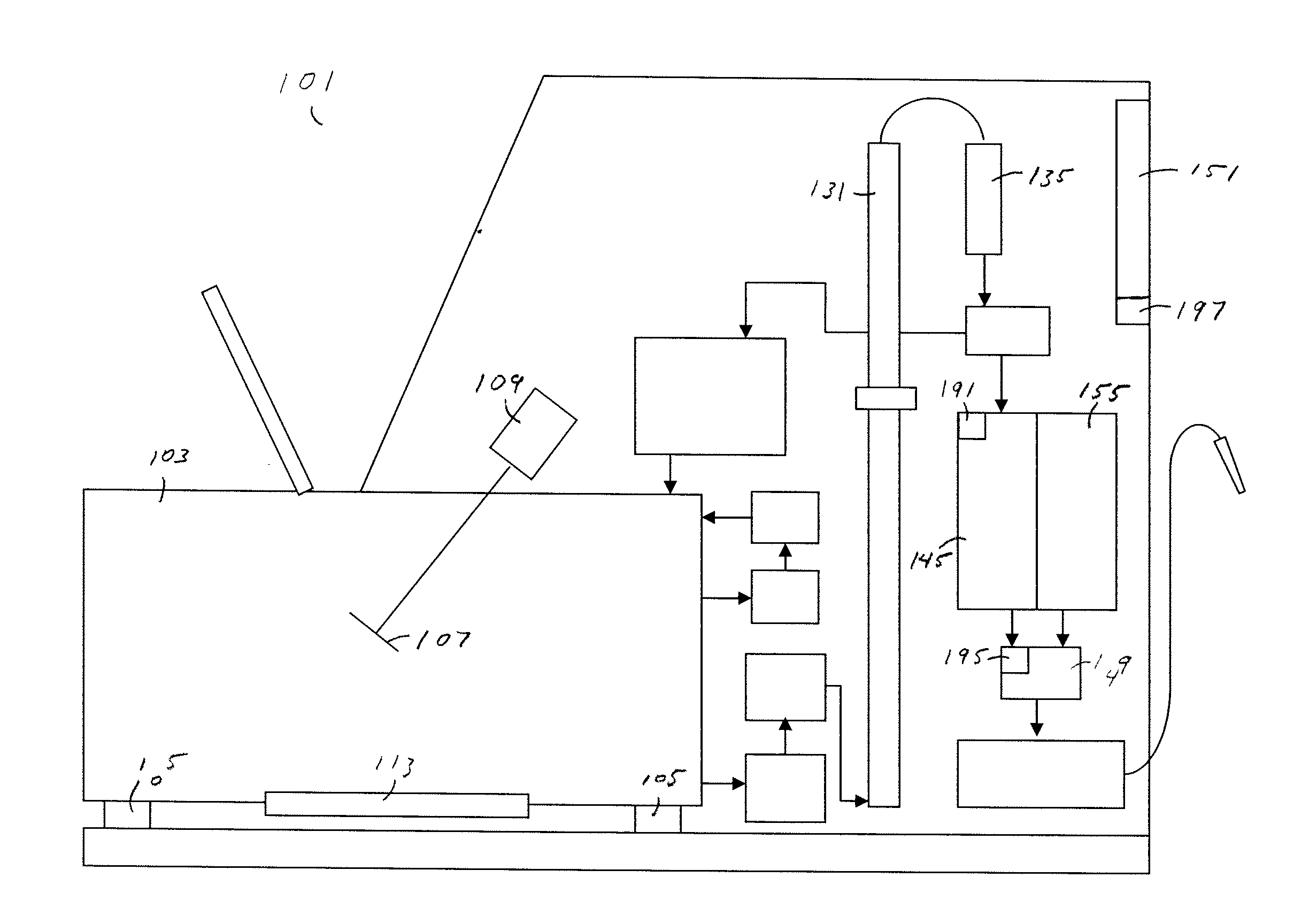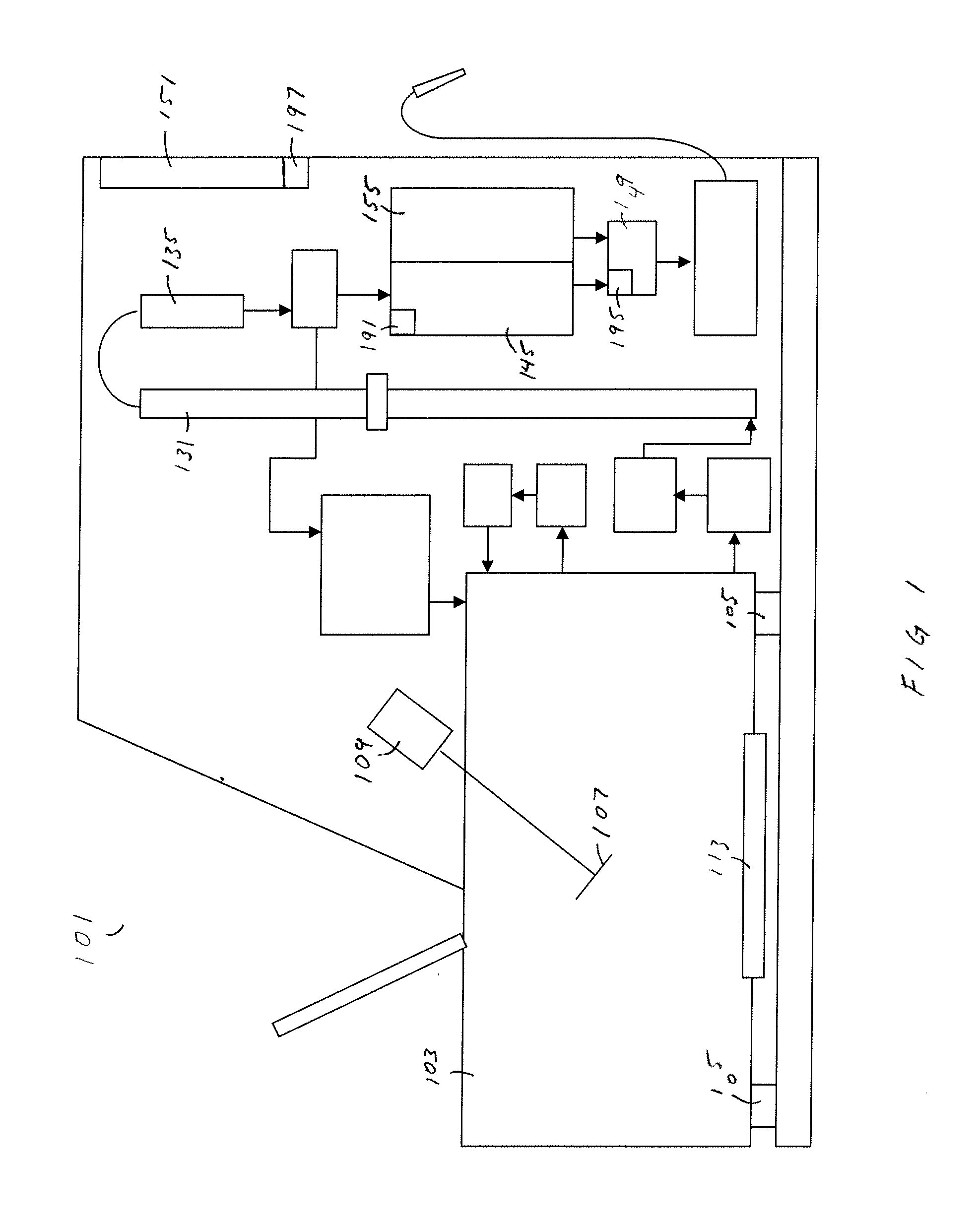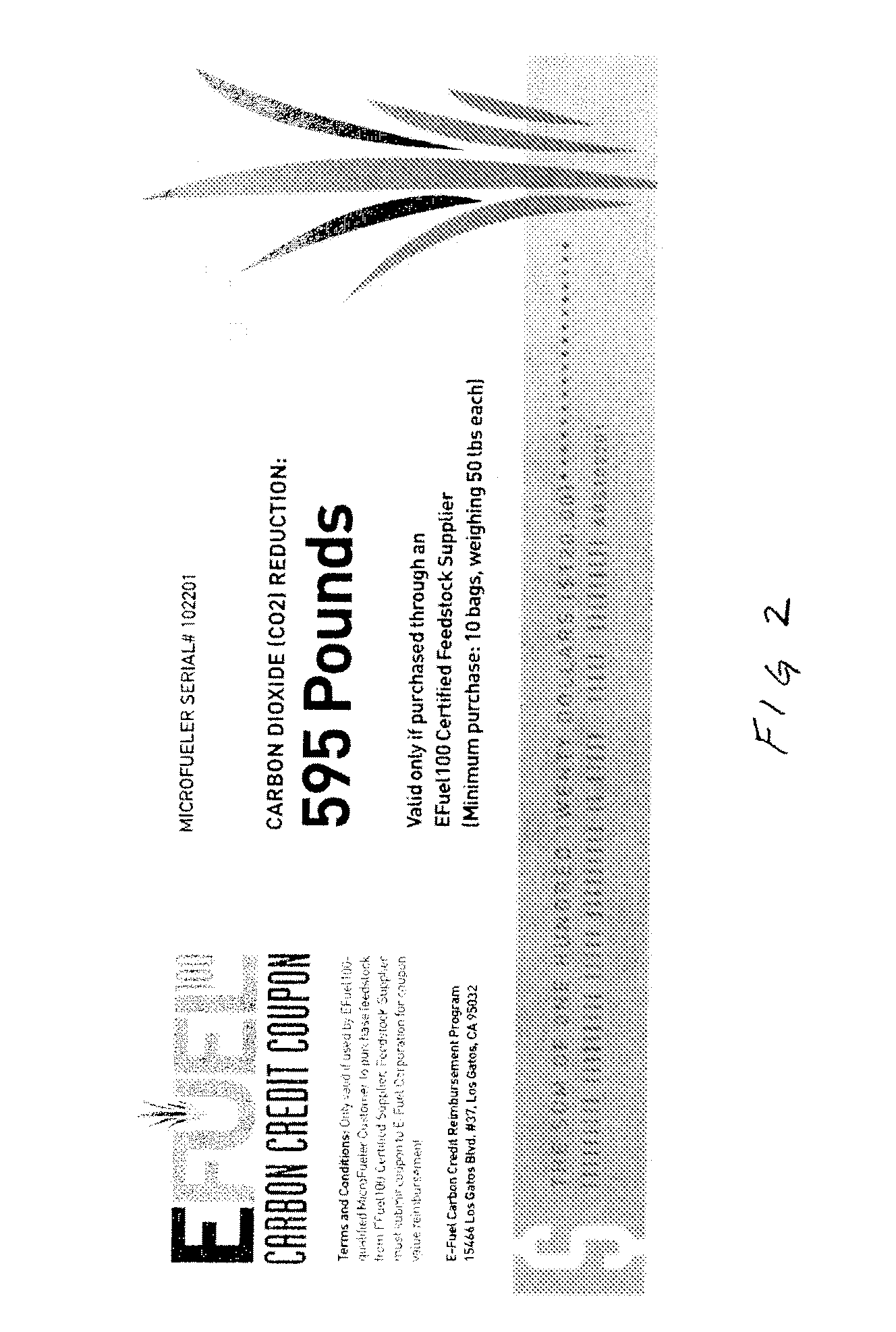Method for using carbon credits with micro refineries
a micro-refinery and carbon credit technology, applied in the field of using carbon credits, to achieve the effect of reducing co2 emissions
- Summary
- Abstract
- Description
- Claims
- Application Information
AI Technical Summary
Benefits of technology
Problems solved by technology
Method used
Image
Examples
Embodiment Construction
[0015]The present invention is a method for using carbon credits with ethanol producing micro-refineries. The micro-refinery is a consumer product that converts sugar and feedstock and / or discarded alcoholic beverages into ethanol. The micro refineries are described in copending U.S. patent application Ser. No. 12 / 110,158, filed on Apr. 25, 2008, which is hereby incorporated by reference. The micro refineries can be purchased or leased from a manufacturer or distributor.
[0016]With reference to FIG. 1, in an embodiment the micro refinery 101 includes: a processing unit 151 having a user interface and a graphical display, a fermentation tank 103, a load cell weight detection system 105, a temperature control system 113 and a mixing agitator 107 coupled to a motor 109, a distillation system 131, a membrane separation system 135, an ethanol storage tank 145, a gasoline storage tank 155 and a blending and pumping system 149 that can all be mounted within a protective housing. The individ...
PUM
 Login to View More
Login to View More Abstract
Description
Claims
Application Information
 Login to View More
Login to View More - R&D
- Intellectual Property
- Life Sciences
- Materials
- Tech Scout
- Unparalleled Data Quality
- Higher Quality Content
- 60% Fewer Hallucinations
Browse by: Latest US Patents, China's latest patents, Technical Efficacy Thesaurus, Application Domain, Technology Topic, Popular Technical Reports.
© 2025 PatSnap. All rights reserved.Legal|Privacy policy|Modern Slavery Act Transparency Statement|Sitemap|About US| Contact US: help@patsnap.com



